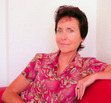Dancing Through Upheaval
Amy Gould on the Desire to See Things Grow
Does place play a part in an artist’s development and ultimate success? Dancer, choreographer and entrepreneur Amy Gould, a South African resident in Cape Town, provides a compelling example of one artist driven to adapt and thrive through world-shaking upheaval and change.
Fellow of the Imperial Society of Teachers of Dance, owner of her fulltime ballet school, choreographer and 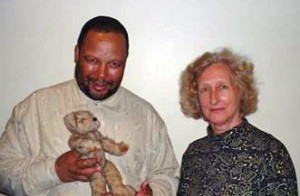 director of Dance Crew, owner-manager of Theatre On-Main and Editor of ImagineMag!, Amy seeds opportunity for herself and others. For three years she served on the Western Cape Cultural Commission on Arts and Culture. In 2007, she received the Western Cape Arts, Culture & Heritage Award for her contribution to the Performing Arts in the field of Dance.
director of Dance Crew, owner-manager of Theatre On-Main and Editor of ImagineMag!, Amy seeds opportunity for herself and others. For three years she served on the Western Cape Cultural Commission on Arts and Culture. In 2007, she received the Western Cape Arts, Culture & Heritage Award for her contribution to the Performing Arts in the field of Dance.
How Amy found time for the following interview, I can only marvel. Welcome!
What is the overarching motivation for this superhuman outpouring of artistic industry?
As with many entrepreneurs, necessity is the mother of invention. I do not know about this `superhuman’ adjective. One thing led to another, and then another… All are part of my interest in the arts and my desire to see things grow.
I realized early on that if I wanted to work as a choreographer I would probably have to develop a company to do so. This was the driving thought behind much of what I have done. There were not many options for dancers, let alone choreographers, to earn an income in this country.
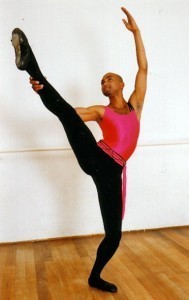 I started to teach in order to generate an income. I built the school to have a permanent and safe environment to work in. The company was formed to create work for the dancers and to choreograph original work. The training area converts into a theatre by means of curtains, lights, sound and all sorts of innovative ideas, like high chairs to create better sight lines. This was created so we could have a permanent performing venue for our productions. The arts magazine was started after I had served three years on the Cultural Commission to the local government. The arts community needs a voice and assistance in promoting and marketing their products and services; I thought I could help.
I started to teach in order to generate an income. I built the school to have a permanent and safe environment to work in. The company was formed to create work for the dancers and to choreograph original work. The training area converts into a theatre by means of curtains, lights, sound and all sorts of innovative ideas, like high chairs to create better sight lines. This was created so we could have a permanent performing venue for our productions. The arts magazine was started after I had served three years on the Cultural Commission to the local government. The arts community needs a voice and assistance in promoting and marketing their products and services; I thought I could help.
Quite a few years after having started teaching, I underwent spinal surgery and while lying still, a condition my body is unaccustomed to, the planning of the building of my own premises was started. I listed the things that were essential to make our working lives more conducive to what we were doing and to the long hours that we spent doing it. Using premises that were far from ideal for dancing, uncomfortable and often not available when needed, was, two years later, a thing of the past.
Incidentally, everyone told me I was mad, I was dreaming and would never be able to support it. I carried on anyway. When I told my family what I was going to do my mother said, `how much will it cost and how much do you have?’ My sister asked, `where will you build it?’ and my brother asked, ` how big?’ Obviously I come from a `can do’ family.
Dancers came to me from the rural areas. I would train one teacher and then she would send me some of her senior students, and so it would continue. One day I looked at my senior classes, many of the students already qualified or in the process of achieving their teaching qualification and thought, nobody attends ballet classes because they want to teach. They come because, deep down, they want to dance. The dancers and I discussed the situation and Dance Crew, a classical contemporary dance company, was started.
We set out to create work of our time and place in society that reflected what we were experiencing and subject matter with which ordinary people would identify. Because of our contacts in the rural areas, we chose to hone our skills, gain experience and introduce ballet and dance to many people who had never seen a stage production. Our subject matter ranged from Alcoholism to Power struggles, Aids, The Life Cycle of a Spider, Ancestors… to name a few. The latest one we have produced has to do with the changing seasons and how, here in Cape Town, we can experience four seasons in one day. Currently we are experimenting with integrated projections and images.
Some of the teachers I have trained have returned to their communities to teach and we are linked into them and now provide an infrastructure and platform for them to perform.
Where we find young people with talent and the desire to work hard, we assist them with bursaries. Sometimes we have funding, sometimes not, but we persevere.
Who or what first sparked your interest in ballet? At what point and under what circumstances did that interest crystallize into a vocation?
I come from a musical background and there was always music in our home. We children all received piano training at a young age. I do not know why I did not become a singer, as my father loved opera. On long car trips he had us singing phrases over and over again until they were note and pitch perfect. Today I still sing in my classes and I think it helps with musicality to be able to sing in phrases rather than only count by the beat or the bar. Ballet was taught at the school I attended, so I enrolled myself and then told my mother what I had done.
I have been most fortunate in always knowing what I wanted. I did not always get what I wanted, but the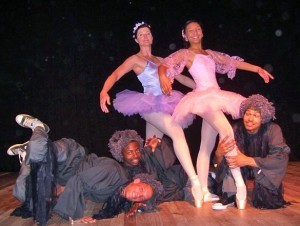 first step is always knowing what you want or need and then finding a way of achieving it.
first step is always knowing what you want or need and then finding a way of achieving it.
My love of music, hyperactivity and speed is what drove me to dance. Creating shapes and patterns with bodies is endlessly fascinating to me. I do not give in or give up, which is another quality for a dancer to have as there seem to be so many pitfalls and so much negativity expressed by people around you and you have to learn not to be put off by the gainsayers.
You have spoken out against the competiveness that permeates ballet training. What prompted you to voice these concerns? Given that places in the best dance companies are limited, as are the most desirable roles, how can competition be, if not avoided, made more constructive?
Competing to be better than another person is setting oneself up for failure. We have different bodies, brains and abilities. We can learn and benefit from each other without the necessity of constantly needing to outdo those around us. The dancer is constantly under criticism when in performance as regards body shape and technical ability. It can and does lead to enormous emotional fragility unless the dancer is developed to be mentally, as well as physically, strong enough to withstand such unsolicited criticism.
I work on highlighting the difference and the importance of that difference among dancers. We work to encourage and build the individual’s confidence while at the same time developing respect for other dancers’ ability.
Ballet has become very athletic, but it is not a sport; it is an art. Does one compare Solzhenitsyn to Enid Blyton, Picasso to Matisse, Wagner to Tchaikovsky?
Fit for purpose—I would like to see teachers, dancers, choreographers understand and define this term. Everything would then make more sense. If a company requires 20 dancers of the same height, similar body shape and stipulates the necessary technical requirements that their company choreography requires, everyone would understand that if you do not fit that profile you will not be eligible. It will have nothing to do with whether you are good or bad, simply not fit for purpose needed.
One of the greatest benefits that comes from good dance training is self-confidence and awareness of one’s own ability, whatever that might be. One needs to feel good to produce good work and if you have to constantly be looking over your shoulder to see who is better, that is destructive.
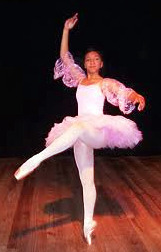 There are incredible acts of violence and corruption in this country and you see it in children from quite a young age. I think we need to develop a far more caring society that teaches people that, in order to succeed, one does not have to get rid of or ridicule the competition. For me, the finest and most productive competition is with oneself.
There are incredible acts of violence and corruption in this country and you see it in children from quite a young age. I think we need to develop a far more caring society that teaches people that, in order to succeed, one does not have to get rid of or ridicule the competition. For me, the finest and most productive competition is with oneself.
You mention`best companies and most desirable roles.’ Again, all of the above applies. Best for what or for whom?
Few countries have, in recent times, undergone such dramatic upheaval and reform as South Africa. Does this unique socio-political environment make particular demands on you as an artist and promoter of the Arts? What has Dance to contribute to the ongoing process of nation building and healing?
Reform? We have a democracy now and laws to uphold it, but it is people’s hearts and minds that are far harder to change. Ignorance as well as lack of knowledge and respect of other people’s culture, religion and way of life create barriers to communication on nearly every level. Inequality is still rife among the haves and the have-nots and this leads to much of the turmoil we experience.
Much was, and still is, made of race as the issue at the heart of matters in this country, but never underestimate the love of power and economic ascendancy as being the reason that so many atrocities happened and continue to happen in this and in many other countries. The love of power is extremely corrupting.
And are things better for everyone now? In some ways, possibly, but not to the extent that is needed. I think we have changed one set of greedy, power driven officials for another set equally greedy and power hungry. And that has nothing to do with race and everything to do with lack of integrity and sheer greed of certain individuals.
In our previous dispensation I did exactly what I am doing now because I chose the path of respecting people regardless of race, creed or color. But there were pitfalls and I paid a price. And I am still paying a price, because I am still going my own way. Not always a popular or accepted thing to do.
So much of funding, especially governmental funding, is dictated by whatever the current political policies are. If you are able to align your requirements or naturally comply with policy, odds are you will receive funding.
Nation building and healing! There are some things that no amount of time will ever heal. Pain and memory might fade, but heal? I don’t think so. So much damage was inflicted on so many it will take many generations to possibly overcome this. Nation building, I think, happens person-to-person, not with big massive events. When I watch the people in my school and company, I see natural friendships being forged through mutual interests and mutual understanding. Somehow we are creating an inclusive community. Recently one of my Moms of color commented,`You know Amy, although you are so white you really are one of us.’ And from a Black woman: ‘Amy, I think you must have some black blood, you think like a black person.’
There are a number of dance companies in South Africa doing wonderful work bringing people together through dance.
In our current climate crime is one of the most critical cost and inhibiting factors with which everyone has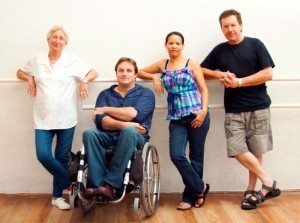 to contend. It is not safe for children to make their own way to classes. Public and private transport is expensive and almost impossible for the poor to use. Distance is another factor. Everything one uses has to be secured so that it cannot be stolen, and insured so that if it is stolen the objects can be replaced. I have had a vehicle stolen from outside my front door; my school has been burgled so many times I have difficulty getting insurance and it is expensive. We have to work with all the doors closed and locked late at night. We also have enormous overheads to maintain everything.
to contend. It is not safe for children to make their own way to classes. Public and private transport is expensive and almost impossible for the poor to use. Distance is another factor. Everything one uses has to be secured so that it cannot be stolen, and insured so that if it is stolen the objects can be replaced. I have had a vehicle stolen from outside my front door; my school has been burgled so many times I have difficulty getting insurance and it is expensive. We have to work with all the doors closed and locked late at night. We also have enormous overheads to maintain everything.
Having read what I have just said above, it sounds very negative and that is definitely not how I feel about my work or my country. It probably is the result of the incredibly high expectations we all had when we took part in our first free democratic election. There was, and there still is, so much goodwill among all our people that to see so many still suffering from sheer grinding poverty is very disturbing.
You have been known to ‘rap’ your corrections in ballet class. I would love to see this on video! How does a teacher engage students patterned by pop culture while instilling an understanding and respect for the classical tradition? What happens when ethnic and cultural differences are added to the mix?
Music is the most amazing of commodities. I have seen very ordinary children with no discernable background in music become enthralled and captivated by Erik Satie’s music as they become familiar with it through the choreography. Much depends on how people are exposed, and the earlier the better. Also how open their minds are to new ideas.
One has to be incredibly aware of everyone’s cultural sensitivities, but if your people trust your personal integrity they will have greater confidence in the artistic aspects as well. My young classes, where there are children from all over Africa attending the school as well as our local children, are extremely vivid and creative when we play improvisational movement games. It is the boys that are totally uninhibited and stimulating to watch as they launch themselves into the heart of the music.
Working with classical training, the choice of music in the ballet class is important and I try to steer clear of music that has too much of a pop beat, otherwise all the hips get seriously active. The greater the musical choices I use in class work, the more sophisticated students’ appetite becomes and the more familiar they become with the unfamiliar.
You have achieved so much, contributed so much, and touched so many lives. What challenges still lie ahead? What’s next for Amy Gould?
Good question. At present, consolidation and streamlining what I have already established is my top priority. The new product to our stable, ImagineMag!, is growing and needs more attention in certain areas. Life is all about change and so is this business. Being sensitive to events that happen around one and constantly adapting to suit emerging needs is essential.
—
Amy’s Dance School: http://amygould.isat.co.za/linksagbs.htm
Imagine Magazine: http://www.imaginemag.co.za/
Theatre On-Main: http://www.theatreonmain.co.za/

Germaine Shames' Blog
- Germaine Shames's profile
- 10 followers


